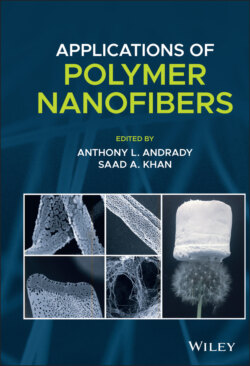Читать книгу Applications of Polymer Nanofibers - Группа авторов - Страница 37
2.2.2 Bicomponent Spinning
ОглавлениеBicomponent spinning is defined as a spinning process using a precursor system containing two different polymers, with the particular shape of spinneret, forming a bicomponent fiber. Usually, these two polymers provide distinct behaviors in thermal properties or solubility in solvents so that one of them can be removed by a thermal or solvent washing process. Using this technique, one can achieve ultrafine fibers via using a particular nozzle, such as the unique shape of islands‐in‐the‐sea or segmented pie, introduced in Figure 2.2 (Chien et al. 2013). The original example of this technique was Japanese industries like Toray and Kanebo, who applied ultrafine fibers in suede leather and clean cloth products. So far, bicomponent spinning is still a promising technique for producing fine filaments.
Figure 2.2 Cross‐section types of bicomponent fibers.
Source: Chien et al. (2013).
Fine fibers made from polymer systems such as PS/PET (Sugawara et al. 2015), PA‐6 and PLA (Fedorova and Pourdeyhimi 2007), hydrophobic polyvinyl acetate (PVAc), and hydrophilic PVP (Rajgarhia et al. 2016) have been used in this process, and the diameters of the obtained fibers can be as small as 300 nm (Zhou and Gong 2008). However, this process is complicated, and the nozzle is difficult to design if a fiber with a small diameter is desired. The sacrificial part of bicomponent fibers is regarded as a waste of raw material which may cause environmental pollution.
